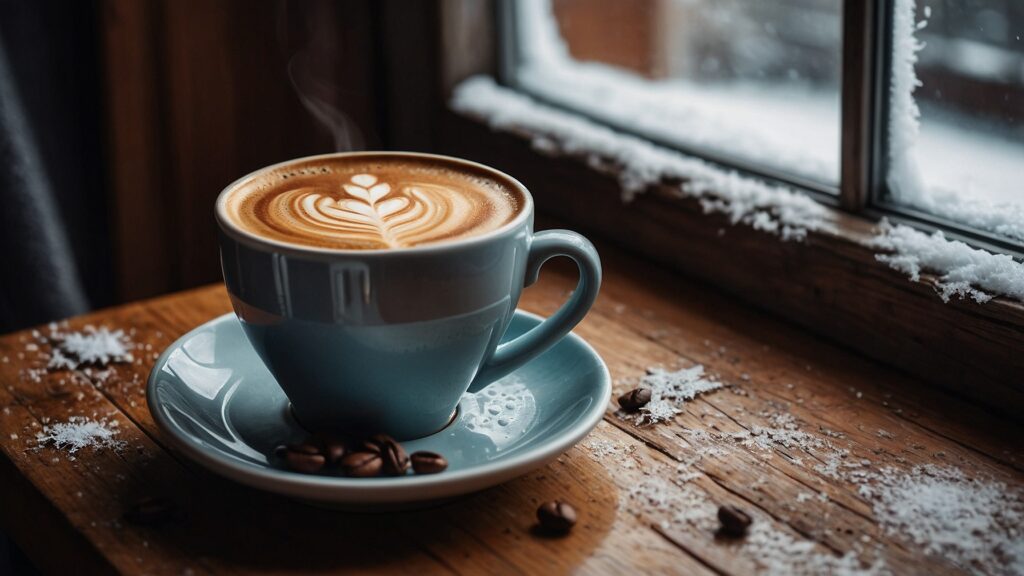Coffee and espresso are beloved beverages yet often confused, especially regarding their caffeine content. You might have heard that espresso packs a bigger caffeine punch. But is that the case? In this article, we’ll compare coffee’s caffeine content to espresso and explore the factors influencing these levels, from brewing methods to serving sizes. We’ll also debunk some common myths and provide you with the knowledge to make an informed choice about caffeine intake. This guide is for coffee enthusiasts, health-conscious consumers, and curious people. So, let’s explore the world of coffee and espresso and uncover the truth about their caffeine content.
Table of Contents
ToggleUnderstanding Coffee and Espresso
Coffee and espresso originate from coffee beans, but they are distinct in several ways, primarily in their brewing methods and the resulting flavors. Espresso is a concentrated coffee that forces hot water through finely ground coffee beans. This process results in a thicker, stronger brew with a layer of crema on top.
In contrast, regular coffee is typically prepared by dripping hot water through coarsely ground beans. The water passes through a filter, producing a lighter, milder beverage. While the types of beans used for both drinks are generally similar, espresso often uses a dark roast to enhance its rich flavors. Understanding these differences is important, as they affect each beverage’s taste and caffeine content.
The Brewing Methods: Espresso vs Coffee
The brewing method determines espresso and coffee’s flavor and caffeine levels. Espresso machines use high pressure to extract flavors and caffeine quickly. This fast process, usually 20-30 seconds, results in a potent shot of espresso.
Coffee brewing, however, is a slower process that often takes several minutes. Methods include drip brewing, pour-over, or using a French press. These methods allow flavors to meld slowly with the water.
Here’s a quick breakdown of popular brewing methods:
- Espresso: High-pressure, finely ground beans with quick brewing.
- Drip Brew: Uses paper filters, gravity-fed, longer brewing.
- French Press: No paper filters, coarser grinds, steeps in water.
Each method affects the caffeine content extracted from the beans. Espresso’s quick brewing offers boldness, and drip coffee’s slower method creates a balanced drink.
Understanding these methods helps you appreciate the nuances in caffeine levels. Whether you prefer a kick from espresso or a milder coffee, the brewing process influences your experience.

Serving Sizes: Comparing Shots to Cups
Size matters significantly when discussing caffeine content. Espresso is served in small quantities, typically one-ounce shots. Despite the small volume, it contains a high caffeine concentration per ounce. In contrast, a standard cup of coffee is about 8 ounces or more. While less concentrated, it often offers more total caffeine due to the larger serving size.
This size difference can lead to misconceptions. Many assume espresso has more caffeine simply because of its strength. But if you’re counting your caffeine intake, a large coffee might surpass that of a single shot of espresso. Knowing the serving sizes helps you make informed choices based on your personal caffeine preferences and needs.
Caffeine Content Breakdown
Understanding caffeine content is important, as espresso and coffee vary in how they deliver caffeine, even though they use the same beans.
Espresso contains about 63 mg of caffeine per ounce, making it quite potent, but it’s typically served in small shots. In contrast, a standard 8-ounce cup of drip coffee usually has around 95 mg of caffeine, providing a smoother and longer-lasting caffeine experience. The difference in serving size accounts for the variance in total caffeine content.
Caffeine in Espresso: Per Ounce Analysis
Espresso is renowned for its intense flavor and high caffeine concentration. A single ounce of espresso contains approximately 63 mg of caffeine.
The fine grind used in espresso machines allows for efficient caffeine extraction, while the high-pressure brewing process maximizes both flavor and caffeine delivery. Although a single shot of espresso is small, its potency is significant, making it an ideal choice for those looking for a quick caffeine boost. However, consuming multiple shots can rapidly increase your total caffeine intake.
When considering your caffeine consumption, it’s important to keep your espresso doses in mind. The concentrated caffeine in espresso means that just a few small sips can equal a larger quantity compared to other coffee brews.
Caffeine in Coffee: The Bigger Picture
While coffee may seem less concentrated, the serving size plays a significant role in its caffeine content. A standard 8-ounce cup of coffee typically contains around 95 mg of caffeine, though this amount can vary based on brewing methods.
Factors such as grind size and the duration of water contact affect the caffeine content. Drip brewing, commonly used for everyday coffee, allows for a gradual extraction of caffeine.
Larger servings of coffee can provide a sustained boost of caffeine, making it a popular choice for those looking for steady energy throughout the day. The milder flavor and larger volume cater to different caffeine needs compared to espresso. When choosing your coffee, consider both the caffeine content and the serving size to meet your desired caffeine intake.
Factors Influencing Caffeine Content
Caffeine content isn’t just about the brew method. Several factors affect how much caffeine ends up in your cup. Bean type is a major player. For instance, Robusta beans contain more caffeine than Arabica. Beyond bean type, roast level can also influence caffeine levels. Darker roasts often taste stronger yet contain slightly less caffeine than lighter ones.
Bean Type and Roast Level
Coffee beans vary in caffeine content, mainly due to their species. Robusta beans pack more caffeine than the smoother Arabica beans. The roast level also impacts the caffeine. Light roasts maintain more caffeine because they’re less roasted. As beans darken, some caffeine can be lost during the roasting process. So, selecting a bean type and roast allows you to control your caffeine intake. Knowing these distinctions helps you choose a blend that meets your energy needs.
Grind, Brew Time, and Temperature
The grind size can significantly impact caffeine extraction. A finer grind, typical for espresso, offers a greater surface area for extraction. Brew time also plays a crucial role. Longer brewing can leach more caffeine, affecting the final content. This happens in methods like French press or cold brew.
Water temperature is also pivotal. Hotter water generally boosts caffeine extraction. These elements allow you to tailor your coffee’s caffeine content to suit your personal preferences and energy requirements.
Health and Consumption
Caffeine affects everyone differently. Some find it boosts energy and focus, while others might experience jitters or insomnia.
Understanding how caffeine impacts your body is crucial. It’s important to balance enjoyment with health needs.
Excessive consumption can lead to dependency. For many, moderation is the key to enjoying benefits without negative effects.
Benefits and Risks of Caffeine
Caffeine offers a quick energy boost and enhances alertness. Many rely on it to kickstart their day or push through a midday slump. It can also improve mood and physical performance.
However, these benefits come with potential downsides. Too much caffeine can lead to anxiety or disrupted sleep. It might also cause an accelerated heart rate and agitation.
For some, caffeine can contribute to digestive issues or increased blood pressure. Understanding these risks can help avoid overconsumption.
Awareness of caffeine sensitivity is essential. A mindful approach maximizes benefits while minimizing risks.
Moderating Your Caffeine Intake
Moderation is essential for those sensitive to caffeine. Set daily limits to prevent adverse effects like restlessness or sleep issues.
Consider selecting lower-caffeine options. Swap a few espresso shots with lighter-roasted coffees or decaf versions.
Spacing out caffeine consumption during the day can also help. This minimizes sudden surges and maintains energy more evenly. Adjusting habits can lead to a healthier balance and enjoyable daily routine.
Cultural and Environmental Considerations
Coffee and espresso hold a special place in many cultures. These drinks are more than just caffeine sources—they are social rituals. Across the globe, people gather over a cup of coffee to bond and converse.
The environmental impact of coffee production is significant. Growing coffee requires vast land and water resources. This has raised concerns about deforestation and biodiversity loss.
As consumption grows, so does the need for sustainable practices. Supporting ethical sourcing and fair trade is crucial. This ensures both environmental protection and community benefit.
The Culture of Coffee and Espresso Drinking
Coffee and espresso have become symbols of hospitality and warmth. In many societies, offering coffee represents friendship and generosity. Cafés serve as communal spaces, fostering connections among people.
Espresso culture, especially in countries like Italy, emphasizes quality and ritual. The quick preparation and consumption highlight efficiency and tradition. Each culture brings unique customs and practices to the coffee experience.
The global spread of espresso and coffee has led to diverse variations. From Turkish coffee to American lattes, these drinks reflect regional tastes and showcase individual creativity and innovation.
Sustainability in Coffee Production
Sustainability in coffee production is gaining attention. As demand rises, so does the environmental burden. Many initiatives now focus on minimizing this impact through sustainable methods.
Shade-grown coffee is one approach to reducing deforestation. It supports better ecosystems and maintains soil health, helping preserve local wildlife and plant diversity.
Fairtrade and organic certifications promote ethical practices. These ensure farmers receive fair compensation, improving their livelihoods. Supporting such initiatives enhances both social and environmental outcomes.
Conclusion: Making an Informed Choice
Choosing between coffee and espresso depends on your caffeine needs. Consider your daily routine and sensitivity to caffeine. Both options offer unique experiences and benefits.
Coffee provides a relaxed and prolonged caffeine intake. It’s ideal for leisurely mornings or extended work sessions. Espresso, on the other hand, offers a quick and concentrated boost.
Ultimately, your choice comes down to personal preference. Understanding the nuances of caffeine content can guide your decision. Enjoy exploring what each beverage has to offer.
FAQ: Common Questions Answered
Is espresso stronger than coffee?
Yes, espresso has more caffeine per ounce than coffee. However, a larger coffee cup usually contains more total caffeine.
Can I drink espresso if I’m sensitive to caffeine?
You might want to opt for smaller servings or decaf options. For personalized advice, consult a healthcare provider.
What factors can affect caffeine content?
Bean type, roast level, grind size, and brewing time all influence caffeine levels. Adjust these to suit your taste and needs.
Final Thoughts on Coffee vs Espresso Caffeine Content
Understanding caffeine content helps people make better choices. Both coffee and espresso can be enjoyed mindfully. Whichever you choose, savor each sip and its unique qualities.






